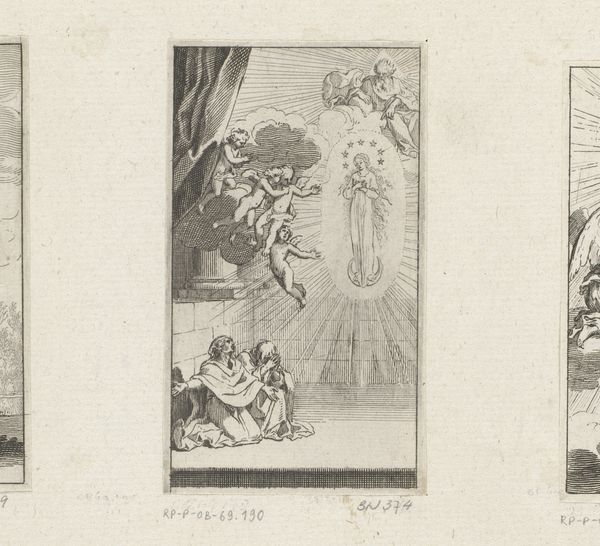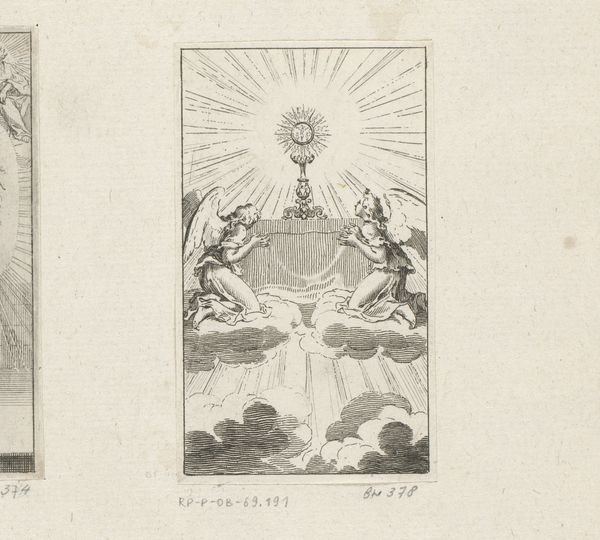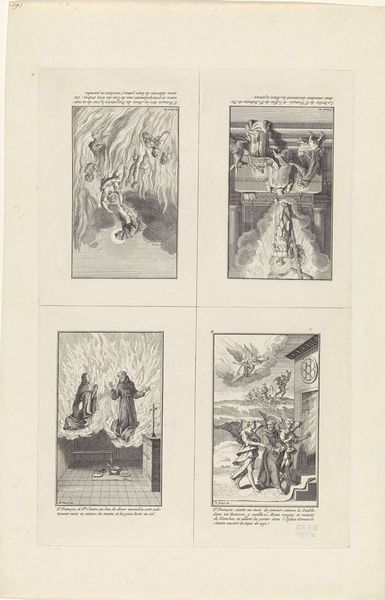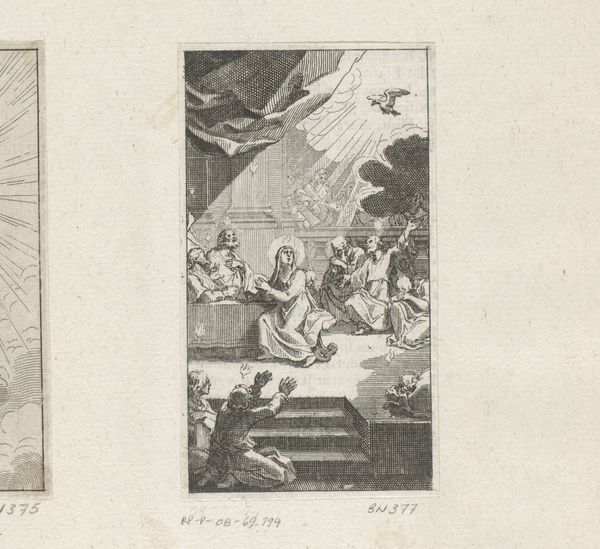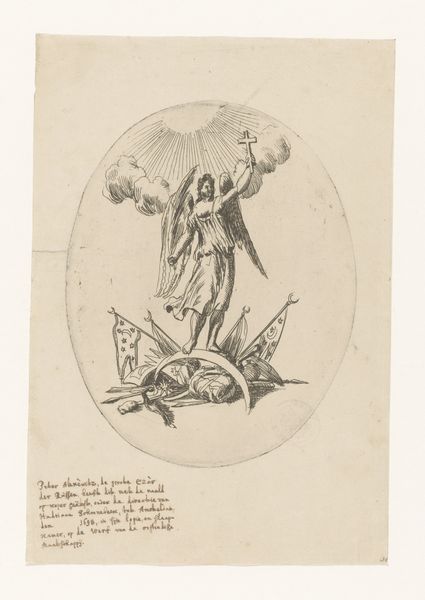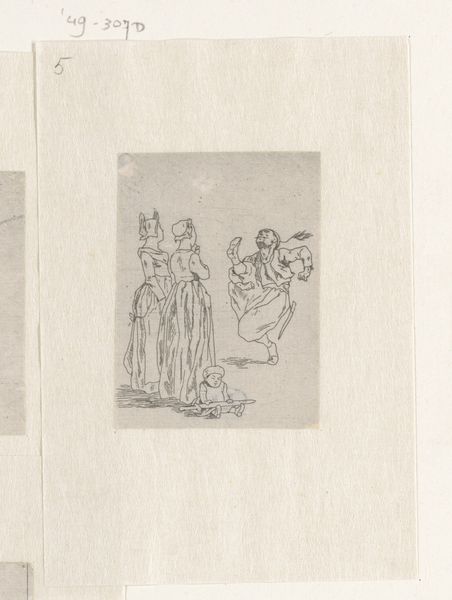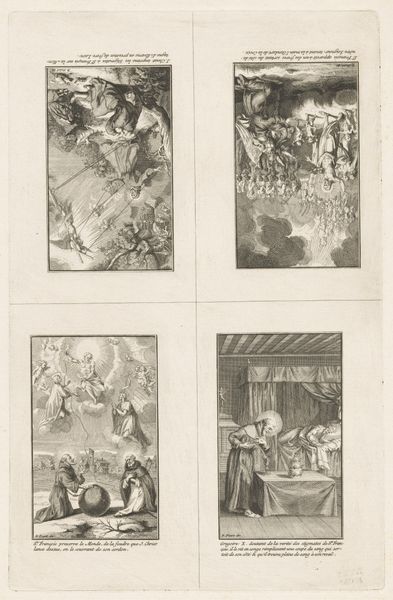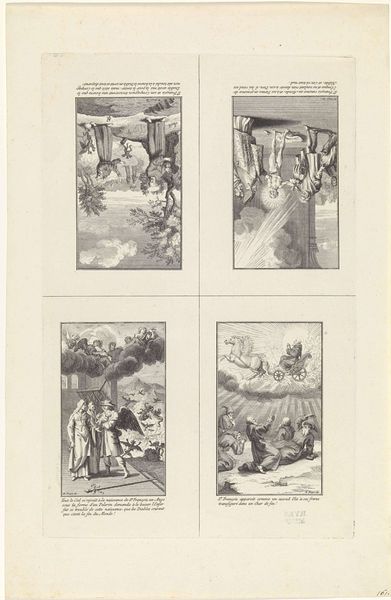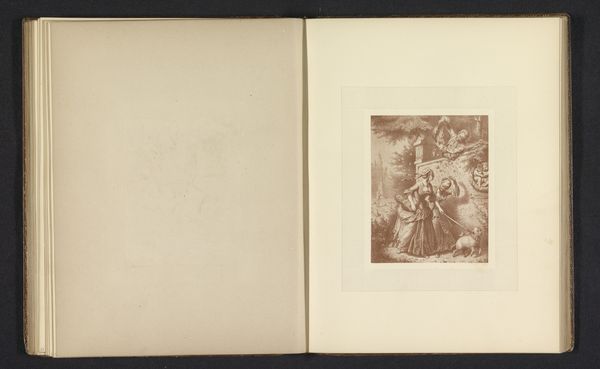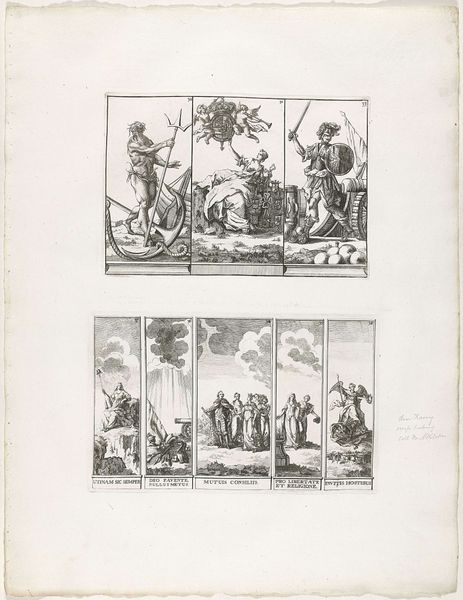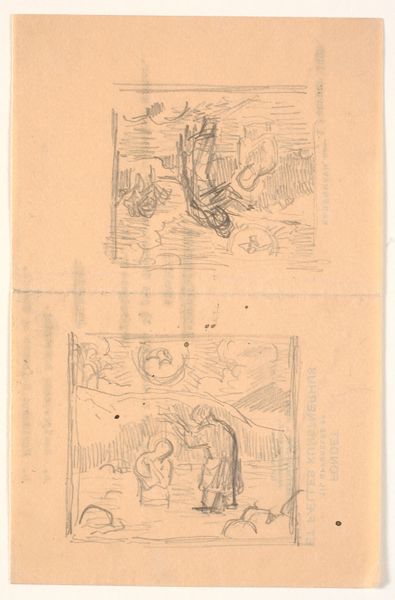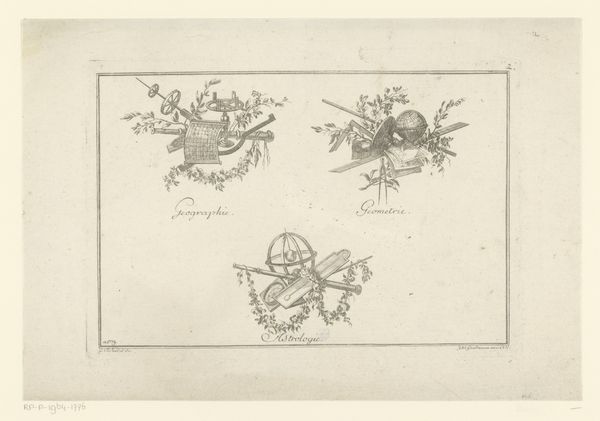
print, engraving
#
narrative-art
#
baroque
# print
#
old engraving style
#
figuration
#
line
#
history-painting
#
engraving
Dimensions: height 108 mm, width 61 mm
Copyright: Rijks Museum: Open Domain
This is Sébastien Leclerc's rendering of ‘The Trinity,’ created sometime around the late 17th or early 18th century, using etching techniques. The composition immediately draws the eye upward. The divine figures, arranged on billowing clouds, are framed by radiant light, creating a powerful sense of elevation. A semiotic interpretation reveals how the ascending lines and the triangle at the top symbolize divinity, framing the figures of God, Jesus and the Holy Spirit. Consider how Leclerc's etching destabilizes traditional depictions by blending religious symbolism with baroque aesthetics. He creates a visual space that challenges fixed meanings and invites contemplation on the nature of faith, mediated through the language of art. The fine lines of the etching technique play with light and shadow, imbuing the scene with an ethereal quality. This artistic choice underscores not only the aesthetic beauty but also the complex interplay between artistic form and theological concepts.
Comments
No comments
Be the first to comment and join the conversation on the ultimate creative platform.
